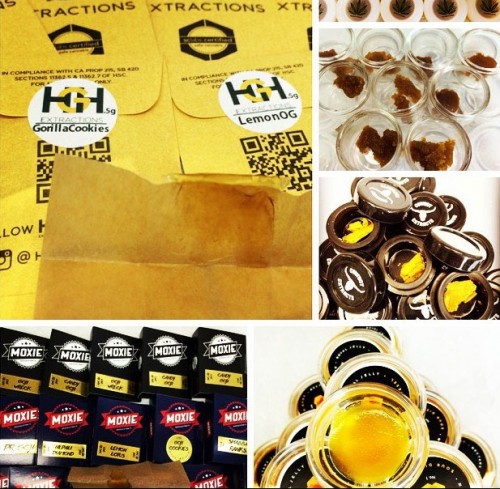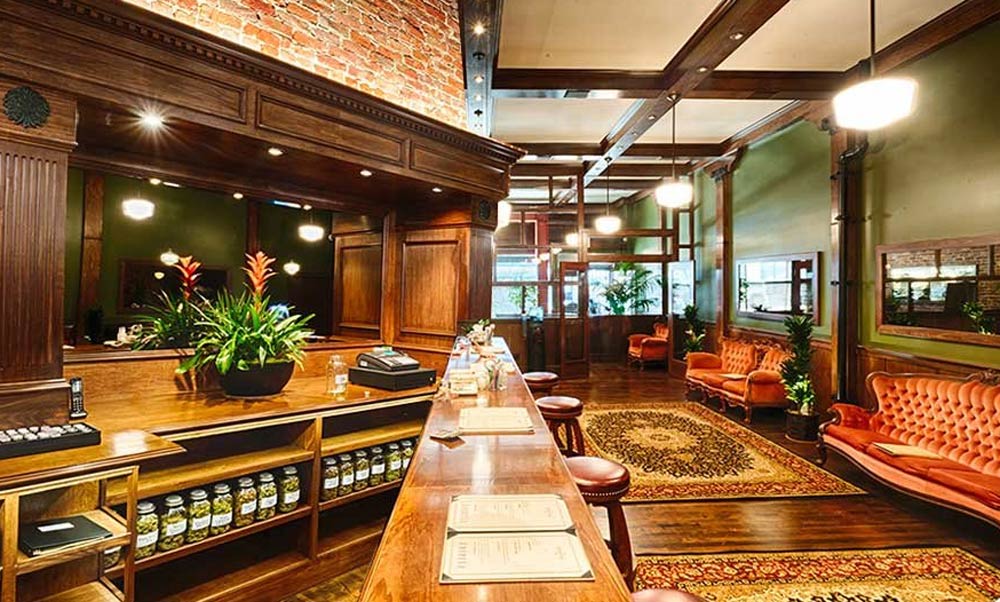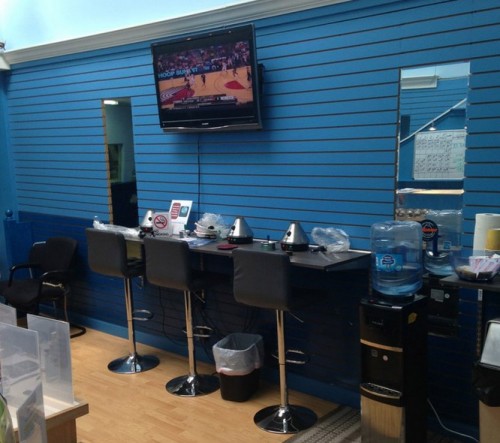SAN FRANCISCO — One hundred and fifty years ago in America, cannabis was legal and regulated. Pharmacies sold patented tinctures and hashish candies.
Richards and Co., located in this city’s iniquitous Barbary Coast, was a popular pharmacy of the day that advertised concentrated cannabis products in newspapers.
One of those newspapers, the San Francisco Dramatic Chronicle, reported the following on Sept. 18, 1865 — according to an excellent SF Gate report by Ellen Komp:
“It appears that a ‘Hasheesh’ mania has broken out among our Bohemians. Yesterday, Mark Twain and the ‘Mouse-Trap’ man were seen walking up Clay street under the influence of the drug, followed by a ‘star,’ who was evidently laboring under a misapprehension as to what was the matter with them.”
The “Mouse-Trap” man was one Tremenheere Lanyon Johns, who wrote that rodentially named column for the Alta California newspaper. The “star” was a policeman. Mark Twain, of course, was the West’s storied newspaperman who was about to leap to his lasting legacy as America’s best-known author of fiction with the publication of his short story about frog-jumping in a mining camp.
Embedded in San Francisco’s Bohemian counterculture, Twain had befriended the author Fitz Hugh Ludlow, who eight years earlier published “Confessions of a Hasheesh Eater.”
West Coast weed
NEW: Get podcasts of The Cannabist Show.
Subscribe to our newsletter here.
Watch The Cannabist Show.
Twain’s reported drug of choice that particular Sunday was hashish candy, possibly procured from Richards and Co. on the northwest corner of Clay and Sansome streets.
It is here in the shadow of the Transamerica Pyramid that I recently ate hashish with a fellow bohemian in Mark Twain Square.
Even in the warm glow of an oncoming hash high on a late-summer September Sunday, it was difficult imagining the 29-year-old Twain traipsing hashily past bars, brothels and gambling dens that gave the Barbary Coast its illicit nickname in the 19th century.
San Francisco has changed substantially since Twain’s time here. This part of the Barbary Coast has been transformed by earthquake, fire and progress. It is now known as the Financial District, its streets like cramped corporate canyons of commercial real estate that every tourist and right-minded San Franciscan knows as a barrier between Market Street and both North Beach and Chinatown.
Still, 150 years later, following generations of Bohemians, Beats, hippies, dot-commers and millennials, San Franciscans love hashish, not purchased from pharmacies but from the modern alternative — the city’s dispensaries that have provided smokable, vape-able, edible and drinkable forms of hashish to medical cannabis patients since the 1990s.
Three blocks from Mark Twain Square on California Street, a boulevard that reaches toward Nob Hill and the Pacific Ocean beyond, a cannabis dispensary will open soon inside a former bank building. Not only will it have a lounge where medical cannabis patrons can vaporize, it will also house a business incubator for cannabis-delivery services in the heart of the staid Financial District.

The cable car runs right past the dispensary — four doors down from Tadich Grill, the landmark restaurant that opened in 1849 and which itself is flanked by Michael Mina, the restaurant of the Michelin-star chef.
That’s progressive, even in a city where a hash-eating young writer’s mania in the street was once merrily celebrated in the newspaper.
These days, you can pay up to $200 for guided walking tours of San Francisco streets where writers from Twain to Kerouac may have indulged in drugs, but none will take you anywhere hashish is sold.
The Gold Rush in San Francisco today is not over a precious metal but over potent concentrates — high-tech THC oil, water hash, wax, shatter and other extracted forms of cannabis that sell for up to $110 per gram.
Barbary buzz
The neighborhood surrounding Barbary Coast Dispensary (925 Mission St.; 415-243-4400; sfmedicaldispensary.com) is a bawdy modern melange of flop houses, tourist hotels, dive eateries and the newspaper formerly known as the San Francisco Dramatic Chronicle, today the undramatic San Francisco Chronicle.

Entering Barbary Coast Dispensary is both stepping back in time and stepping into the future.
Inside these high brick walls, at a long wooden bar in a spare room with Gold Rush sofas upholstered in bordello pink, concentrates comprise four full pages of an eight-page book whose style and design suggest you are ordering craft cocktails in a hip tavern that tips its hat to San Francisco’s past.
Hash oil, water hash, wax, shatter, CBD oil — 66 different concentrates, not counting the full page of vape pens and oil cartridges, priced from $15 per half gram to $80 per gram.
Barbary Coast does not, at present, provide vaporizers and lounge space like many other San Francisco dispensaries, so I bought a hash-infused joint to-go. The joint fueled coffee conversation the next morning as hashy bonhomie and breakfast sunshine filled my friend’s Haight Street apartment.
High tide
At 1944 Ocean Collective (1944 Ocean Ave.; (415) 239-4766; 1944ocean.com), my head swam in the details that the dispensary’s staff shared about the live-resin, nug-run and strain-specific oils, shatters and water hashes whose prices are on par with Barbary Coast Collective.

One pricey standout was a nipple-sized vial of a critically extracted oil called Terp Juice. Priced $110 per gram, it shared the glowing amber hue of a Pacific Ocean sunset, its aroma clean like a perfect wave.
The thought of vaping Terp Juice at 1944 Ocean’s clean and comfortable but modest vape station felt akin to drinking Johnny Walker Blue Label at a corner saloon.
I chose instead a $10 gram of Sour Diesel water hash. Sprinkled over some Blue Haze bud I brought with me, the combination blanketed my mind with memories of my ex-wife and the bags of vaporized cannabis we shared a decade ago.
On my way out, I grabbed a snack from a box of treats by the front door. It was a madeline, the shell-shaped cookie that is the literary touchstone of another writer, Marcel Proust.
I ate the madeline, high and hungry, and journeyed back to Mark Twain Plaza, savoring the precious essence of San Francisco: cold wet air alive with dead writers and hash.
Post-script
Two months after the San Francisco Dramatic Chronicle outed the hash-eating Bohemian newspaperman, Twain leaped to national celebrity when The New York Saturday Press published his short story “Jim Smiley and His Jumping Frog” — whose titled morphed to “The Celebrated Jumping Frog of Calaveras County” — on Nov. 18, 1865.
Vaporizer reviews
Concentrates 101
Part 1: What’s on the market? Info about kief, BHO, water hash and more
Part 2: How should I smoke this shatter? There are many ways to consume concentrates
Part 3: Are concentrates right for me? What you need to know about potency, expected effects and more
In his 1867 travel letters, “The Innocents Abroad,” Twain never mentioned hashish. He wrote only of dropping into tranquil repose after smoking “the soothing narghili” of Persian tobacco in Turkey. But in an unpublished chapter, Twain describes a Moorish palace in Spain as “a hasheesh delusion, its Hall of Ambassadors a marvelous dream.”
Twain’s last written reference to hash was published in The Alta California newspaper on March 3, 1868. In that article, Twain commented upon a ballet, once again using the exotic spelling for the concentrated cannabis that was legal and popular in Twain’s time:
“The final grand transformation scene is a vision of magnificence such as no man could imagine unless he had eaten a barrel of hasheesh.”
